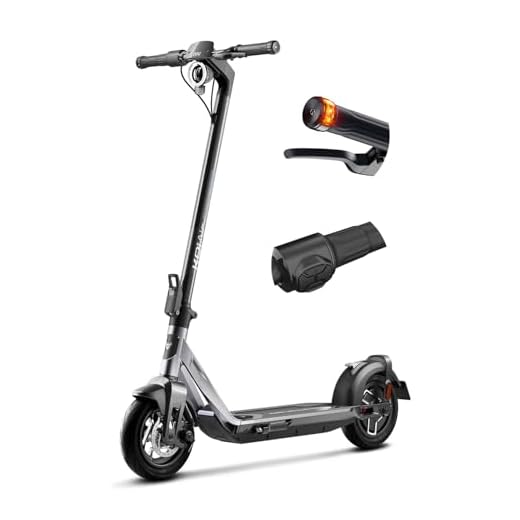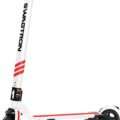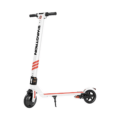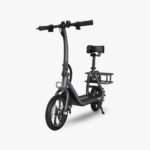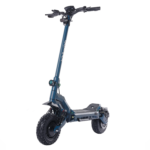- Home
- Scooters
- Compare Scooters
- Segway Ninebot Max G3 vs NIU KQi Air Comparison
Segway Ninebot Max G3 vs NIU KQi Air Comparison
Segway Ninebot Max G3 vs NIU KQi Air: Full Breakdown
1. Design & Portability
The Segway Ninebot Max G3 features a robust, heavy-duty frame weighing around 24.6 kg (54 lbs). Its design is built for durability and performance, integrating 11-inch inflatable tires, dual hydraulic suspension, and a new TFT display. It includes modern smart features like Bluetooth AirLock and Apple FindMy support. Although well-built, the scooter’s weight can be a downside for riders who need to carry it up stairs or lift it into a car trunk regularly.
In contrast, the NIU KQi Air is remarkably light, tipping the scale at just 11.9 kg (26.5 lbs). This makes it one of the most portable electric scooters in its class. Its carbon-fiber and magnesium frame gives it both strength and lightness, and while it lacks full suspension, the comfort is still exceptional for short city rides. It’s ideal for multi-modal commuters who combine scooter use with public transport.
2. Performance (Motor, Speed, & Hill Climbing)
The Max G3 comes with a powerful motor rated at 850W nominal and capable of reaching 2000W peak. This setup allows it to hit speeds up to 28 mph (45 km/h) and tackle steep hills without much effort. Acceleration is smooth but powerful, making it suitable for heavier riders or those who face more demanding terrain.
Meanwhile, the KQi Air uses a 350W motor that peaks at around 700W. Its top speed is approximately 20 mph (32 km/h), which is enough for most city commutes. It handles moderate inclines effectively, though it’s not built for high-gradient climbs. Acceleration is less aggressive but still responsive enough for zipping through urban environments.
3. Range & Battery
Battery capacity significantly influences range, and here the Max G3 clearly leads. It includes a 597Wh battery that delivers up to 50 miles (80 km) in eco mode and around 40 miles (64 km) in regular riding. An optional secondary battery can extend this even further, making it an excellent option for long-distance riders.
The KQi Air houses a 451Wh battery that offers real-world ranges between 24 to 27 miles (38 to 43 km), depending on rider weight, terrain, and speed. While it doesn’t go as far as the Max G3, its efficiency is impressive due to the lightweight frame. It’s more than sufficient for most urban commutes and casual use.
4. Ride Comfort & Handling
One of the key strengths of the Max G3 is its dual hydraulic suspension system, which greatly enhances ride comfort. Combined with its large 11-inch pneumatic tires, it absorbs potholes, cracks, and bumps effortlessly. It feels stable and grounded even at high speeds or over uneven terrain.
The KQi Air lacks a suspension system but manages to offer a comfortable ride through its tubeless 9.5-inch tires. For such a lightweight scooter, the ride quality is impressive. It performs best on smooth urban roads and bike paths. Its handling is nimble and precise, making it great for navigating tight spaces or crowded sidewalks.
5. Braking & Safety Features
Safety is another area where both scooters shine in their own way. The Max G3 is equipped with dual disc brakes (front and rear), a traction control system, and powerful front and rear lights. It also features a wide deck for a stable stance and supports app-enabled controls like speed limiters and cruise control.
The KQi Air uses a single disc brake in combination with regenerative braking, allowing smooth and efficient stops. Despite having fewer physical brake components, its stopping performance is solid. It also boasts integrated turn signals, a loud horn, IP55 water resistance, and a theft-prevention alarm system for added peace of mind.
6. App & Smart Features
Both scooters come with companion apps that enhance the overall riding experience. The Max G3’s app allows users to toggle between ride modes, set speed limits, activate the AirLock feature (which automatically locks/unlocks the scooter via Bluetooth), and track riding data. Apple FindMy integration is a standout feature for location tracking.
The KQi Air’s app includes smart locking, customizable lighting settings, ride tracking, and a responsive anti-theft alarm. The app interface is user-friendly, and firmware updates are regularly pushed to improve performance and safety features.
7. Portability & Everyday Use
While the Max G3 scores high on comfort and power, its weight makes it less convenient for daily carry or multimodal trips. It’s best for riders who travel long distances without needing to frequently lift or transport their scooter. The foldable design is practical, but the weight is still a consideration for apartment dwellers or those using stairs.
The KQi Air is designed with portability in mind. Weighing just over 26 lbs, it’s easy to carry in one hand, store under a desk, or lift into a car. It folds quickly and locks in place securely. If your commute involves stairs, elevators, or trains, the KQi Air is a far better match.
8. Price & Value
The Max G3 retails for around $1,499 but can often be found for closer to $1,200. Considering its powerful motor, long range, suspension system, and smart features, it offers excellent value for serious commuters who demand top-tier performance.
The KQi Air is priced similarly at around $1,399 MSRP, but discounts often bring it to around $1,050. While it offers a smaller battery and motor, its portability, modern design, and smart features justify the cost, especially for urban commuters looking for a stylish and lightweight solution.
Final Verdict: Which Should You Choose?
Choose the Segway Ninebot Max G3 if:
- You want top speed and power for longer trips
- Comfort is a high priority, especially over bumpy roads
- You don’t mind a heavier scooter
- You want maximum range and features like suspension, Apple FindMy, and dual brakes
Choose the NIU KQi Air if:
- Portability and light weight matter most
- You commute short to medium distances
- You value turn signals, app-based security, and a modern design
- You need a scooter that’s easy to carry and store
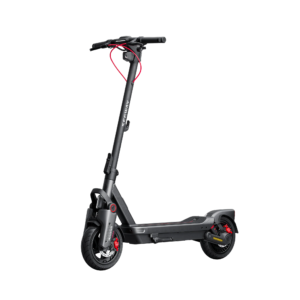  | |
| Price | |
| Our Rating | |
| Brand | SegwayNIU |
| Category | Electric ScootersElectric Scooters |
General
| Model The Model specifies the exact version or name of the scooter. It helps identify its unique design, features, and specifications within the manufacturer’s product line. Knowing the model makes it easier to compare options, find compatible accessories, or look up support information. | Ninebot MAX G3KQi Air |
| Brand The Brand identifies the manufacturer or company that designs and produces the scooter. A trusted brand is a sign of quality, reliability, and good customer support. Well-known brands often have higher standards for safety, performance, and after-sales service, giving you more confidence in your purchase. | SegwayNIU |
| Release Date The Release Date indicates when the scooter model was officially launched on the market. This helps you know how current the design, technology, and features are. A newer release date often means updated components, improved performance, and the latest safety or smart features. | 01 January 202401 January 2023 |
| Recommended Age Recommended Age indicates the minimum age range that the scooter is designed for, based on safety, size, and ease of use. Following the recommended age helps ensure that riders can handle the scooter’s speed, weight, and controls comfortably and safely. Always check local laws and use protective gear, especially for younger riders. | Teens & Adults (14+)14+ years |
Performance & Power
| Motor Power (Wattage) What it means: The motor power, measured in watts (W), shows how strong the scooter’s electric motor is. Why it matters: Higher wattage usually means better acceleration, more torque, and improved performance on hills or rough terrain. For example, a 250W motor is good for flat city roads and light riders, while a 500W or 1000W motor provides more power for faster speeds or climbing steep inclines. | 850 W nominal, 2,000 W peak350 W rated, up to 700 W peak |
| Top Speed The Top Speed indicates the maximum speed that the scooter can reach under optimal conditions. It’s usually measured on level ground with a fully charged battery and an average rider weight. A higher top speed allows you to travel longer distances faster, but always ensure you ride within legal speed limits and your personal comfort zone for safety. | Up to 28 mph (≈45 km/h)Up to ~32 km/h (20 mph) |
| Battery Capacity Battery Capacity refers to the total amount of energy the scooter’s battery can store, usually measured in ampere-hours (Ah) or watt-hours (Wh). A higher battery capacity means you can ride longer distances on a single charge, reducing the need for frequent recharging. Keep in mind that actual range can vary depending on rider weight, terrain, speed, and weather conditions. | 597 Wh (46.8 V)451.2 Wh (48 V, 9.4 Ah) |
| Estimated Range per Charge The Estimated Range per Charge indicates the average distance the scooter can travel on a single full battery charge. This range is calculated under optimal conditions, such as flat terrain, moderate speed, and average rider weight. Real-world range may vary depending on riding style, terrain, weather, and load. A longer range means fewer recharges and greater freedom for longer trips. | Up to 50 miles (≈80 km) using SegRange™ tech~50 km (31 mi) claimed; real‑world ~24 km |
| Hill Climb Ability Hill Climb Ability describes the maximum incline or slope that the scooter can handle while maintaining stable performance. It’s typically expressed as a percentage or in degrees. A higher hill climb rating means the scooter can tackle steeper hills without losing too much speed or power. Actual climbing performance may vary based on rider weight, battery charge, and terrain conditions. | Handles inclines up to 30%Up to ~20% incline |
| Drive System The Drive System refers to how power from the motor is delivered to the wheels. Electric scooters typically use either a hub motor (directly integrated into the wheel) or a chain/belt drive system. A high-quality drive system ensures smooth acceleration, efficient power transfer, and low maintenance. The choice of drive system affects performance, noise level, and overall ride experience. | Rear wheel hub motorRear-wheel hub motor |
Charging & Electrical
| Charging Time Charging Time indicates how long it takes to fully recharge the scooter’s battery from empty to 100% using the standard charger provided. Faster charging means less downtime and more time on the road. Actual charging time may vary slightly depending on battery capacity, charger output, and environmental conditions. | ≈ 3.5 hours with standard charger; ≈ 2.5 hours using optional dual input chargerAround 5 hours |
| Battery Type Battery Type refers to the specific technology used in the scooter’s battery, which affects performance, lifespan, weight, and charging time. Most modern electric scooters use high-quality lithium-ion (Li-ion) batteries because they offer a good balance of energy density, durability, and low maintenance. A reliable battery type ensures consistent power delivery and longer riding ranges. | Lithium-ion with Segway BMS and fast charging capabilityNIU Energy lithium‑ion (48 V, 21700 cells) |
| Removable Battery A Removable Battery means the battery pack can be easily detached from the scooter for convenient charging and replacement. This feature allows you to charge the battery separately, swap it with a spare for extended range, or securely store it indoors in extreme weather. Removable batteries add flexibility and make it easier to keep your scooter powered up wherever you are. | YesNo |
| Regenerative Braking Regenerative Braking is an energy-saving feature that converts some of the energy normally lost during braking back into battery power. When you slow down or brake, the motor works in reverse to generate electricity, which helps extend the scooter’s range and improves overall efficiency. This system also reduces wear on traditional brake components, leading to lower maintenance over time. | YesYes |
| Lighting Lighting refers to the built-in front and rear lights that enhance visibility and safety when riding in low-light conditions or at night. Good lighting helps you see the road ahead and ensures that other road users can see you. Many scooters include LED headlights, taillights, and sometimes brake lights or side reflectors for added safety and compliance with local traffic regulations. | Integrated front/rear LED lights plus side illumination and handlebar turn signalsFront “Halo” LED, rear brake light, turn signals, ambient side lights, electric horn |
Build & Dimensions
| Scooter Weight Scooter Weight refers to the total weight of the scooter when fully assembled, including the battery. This affects how easy it is to carry, lift, and store the scooter when not in use. A lighter scooter is more portable and convenient for commuting, especially if you need to carry it upstairs or onto public transport. Keep in mind that a sturdy frame and quality components may add to the weight but also contribute to better durability and ride stability. | Approx. 24.3 kg (≈54 lb)Approximately 11.9 kg (26.2 lb) |
| Maximum Rider Weight Maximum Rider Weight indicates the highest rider weight that the scooter is designed to safely support while maintaining optimal performance and stability. Staying within this limit helps ensure reliable acceleration, braking, and climbing ability, and it protects the frame, suspension, and motor from excessive strain. Exceeding the recommended limit may reduce performance and increase wear on components. | Up to 130 kg (≈286 lb)Up to 120 kg (264 lb) |
| Deck Size Deck Size refers to the dimensions of the scooter’s standing platform. A wider and longer deck provides more foot space, allowing you to stand comfortably and adjust your stance while riding. A well-sized deck improves balance and stability, especially on longer rides or at higher speeds. Compact decks, on the other hand, help keep the scooter lightweight and portable. | Wide anti-slip platform (~51 × 48 inches footprint)Wide carbon-fiber deck (~7.5″ / 19 cm) |
| Handlebar Height Handlebar Height refers to the distance from the deck to the handlebars, which affects your riding posture and comfort. An appropriate handlebar height helps you maintain good balance, reduces strain on your back and arms, and makes steering more comfortable. Some scooters have adjustable handlebars to fit riders of different heights, while others have a fixed height for a streamlined design. | Fixed standard height (~40–46 inches)Fixed, wide (~54 cm) for ergonomic control |
| Folding Mechanism The Folding Mechanism describes how easily and securely the scooter can be folded for carrying and storage. A well-designed folding system lets you quickly collapse the scooter into a compact size, making it convenient to transport on public transit, store under a desk, or fit into a car trunk. Look for sturdy latches and safety locks to ensure the scooter stays firmly in place when folded or unfolded. | YesYes |
| Dimensions Folded Dimensions indicate the size of the scooter when it’s fully folded. This measurement shows how much space the scooter will take up when stored or carried, making it easier to check if it will fit in your car trunk, under a desk, or in a closet. Compact folded dimensions are ideal for commuters who need to bring their scooter on public transport or store it in tight spaces. | Compact form ideal for storageUltra‑compact with flat-fold handlebars (~48 cm) |
| Material Material refers to the primary construction materials used for the scooter’s frame and key components. High-quality materials like aircraft-grade aluminum, reinforced steel, or durable composites provide strength, stability, and a lighter overall weight. A sturdy material ensures the scooter can handle daily wear and tear while maintaining safety and performance. | Aluminum alloy frame, tested for durability up to 20,000 km and 500,000 suspension cyclesCarbon fiber (70%) and magnesium alloy chassis |
Safety & Control
| Brake Type(s) Brake Type(s) describe the braking systems the scooter uses to help you slow down or stop safely. Common brake types include mechanical brakes (like drum or disc brakes), electronic brakes, and foot brakes. Many scooters combine multiple braking systems for added safety and shorter stopping distances. The type and quality of brakes affect your control, especially when riding at higher speeds or on slopes. | Front and rear hydraulic disc brakes with E‑ABS systemFront mechanical disc brake + rear regenerative brake |
| Suspension Suspension refers to the system that absorbs shocks and vibrations while riding, providing a smoother and more comfortable ride over uneven or rough surfaces. Scooters may have front suspension, rear suspension, or dual suspension for better shock absorption and stability. Good suspension helps reduce rider fatigue and improves control, especially when riding on bumpy roads or off-road paths. | Adjustable dual hydraulic front and rear suspensionNone—relies on tire and frame comfort design |
| Tire Type Tire Type refers to the kind of tires the scooter uses, which directly affects ride comfort, traction, and maintenance. Common types include solid (airless) tires, pneumatic (air-filled) tires, or hybrid options. Pneumatic tires offer better shock absorption and a smoother ride on rough surfaces, while solid tires are puncture-proof and require less upkeep. The right tire type helps ensure safe handling and a comfortable ride in different conditions. | 11″ pneumatic self-sealing tubeless tyres (with jelly layer)9.5″ tubeless pneumatic puncture‑resistant |
| Tire Size Tire Size indicates the diameter and width of the scooter’s tires, which affect ride comfort, stability, and how well the scooter handles different terrains. Larger tires generally offer better shock absorption and a smoother ride over bumps and rough surfaces, while smaller tires keep the scooter lighter and more portable. Choosing the right tire size helps ensure a balance between agility and comfort. | 11 × 2.5 inches9.5″ × 2.3″ (241 × 58 mm) front & rear |
| Kickstand The Kickstand is a built-in stand that allows you to park your scooter upright when it’s not in use. A sturdy kickstand keeps the scooter stable and prevents it from tipping over, protecting it from scratches and damage. It also makes storing and accessing your scooter more convenient, whether you’re at home, work, or on the go. | YesYes |
| Water Resistance Rating Water Resistance Rating indicates how well the scooter is protected against water and moisture, usually shown as an IP (Ingress Protection) rating. This rating helps you understand whether the scooter can handle light rain, splashes, or wet roads without damage. While most scooters are not fully waterproof, a good water resistance rating adds peace of mind when riding in changing weather conditions. Always avoid deep puddles or submerging the scooter to protect its electrical components. | IPX6 for body, IPX7-rated battery packIP55 (splash and dust resistant) |
Features & Extras
| Display/Console The Display (or Console) shows important real-time information about your ride, helping you monitor your scooter’s status at a glance. Typical displays show speed, battery level, distance traveled, and riding mode. Some models also include additional features like Bluetooth connectivity, app integration, or backlighting for better visibility at night. A clear and easy-to-read display enhances safety and convenience on every trip. | 2.4″ Smart TFT full-color screen showing speed, battery, trip info, navigation, caller IDIntegrated LED dashboard shows speed, mode, and battery status |
| Ride Modes Ride Modes refer to the different speed and power settings you can choose to match your riding style or road conditions. Common modes include eco for maximum range and energy efficiency, standard for everyday balance, and sport or turbo for higher speed and stronger acceleration. Switching between ride modes allows you to customize performance, conserve battery, and ride safely in various environments. | Eco, Standard, Sport, plus Walk & Park modes; boost acceleration mode available on commandAdventure modes: E‑Save, Sport, Pedestrian, Dynamic, Cruise Control, plus Custom via app |
| Smart App Connectivity Smart App Connectivity lets you pair your scooter with a dedicated mobile app via Bluetooth. Using the app, you can monitor real-time ride stats like speed, battery level, and range, adjust settings such as ride modes or cruise control, lock the scooter for added security, and sometimes receive firmware updates. This feature adds convenience and allows you to personalize your riding experience right from your smartphone. | YesYes |
| Anti-Theft System The Anti-Theft System helps protect your scooter from unauthorized use or theft. This feature can include built-in alarms, electronic motor locks, GPS tracking, or remote locking through a mobile app. A good anti-theft system provides peace of mind when parking your scooter in public spaces, adding an extra layer of security to safeguard your investment. | App-enabled digital lock and Apple Find My support for rider peace of mindNFC card unlock, app lock, built-in GPS alarm (estimated from features list) |
| Cruise Control Cruise Control allows you to maintain a steady speed without continuously holding the throttle. This feature makes longer rides more comfortable by reducing hand fatigue and providing a smoother, more relaxed riding experience — especially on flat, open roads or bike lanes. For safety, cruise control can usually be easily activated or deactivated while riding. | YesYes |
| Accessories Included Accessories Included lists the additional items that come with the scooter to enhance your riding experience and convenience. Common accessories may include a charger, kickstand, bell, lights, phone holder, or carrying strap. These extras add value by making your scooter safer, easier to use, and ready to ride straight out of the box. | Charger, user manual, reflectors; optional fast charger accessory availableElectric horn, reflectors, charger, user manual |
Warranty & Compliance
| Warranty Period The Warranty Period indicates how long the manufacturer guarantees the scooter against defects in materials and workmanship under normal use. A good warranty provides peace of mind, showing the brand’s confidence in its product quality. Always check what parts are covered, such as the frame, battery, and motor, and follow the maintenance guidelines to keep your warranty valid. | Typically 12 months (varies by region)Typically 24 months |
| Certifications Certifications confirm that the scooter meets specific safety, quality, and environmental standards set by recognized organizations or regulatory bodies. Common certifications may include CE, RoHS, UL, or other local compliance marks, depending on your region. These certifications ensure that the scooter is manufactured to high standards and is safe and legal to use in your country. | UL 2272 certified; CE, RoHS, IPX6/IPX7 compliantUL‑2272, CE, IP55 compliant, meets US/EU standards |
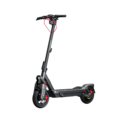 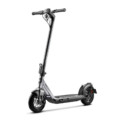 |



